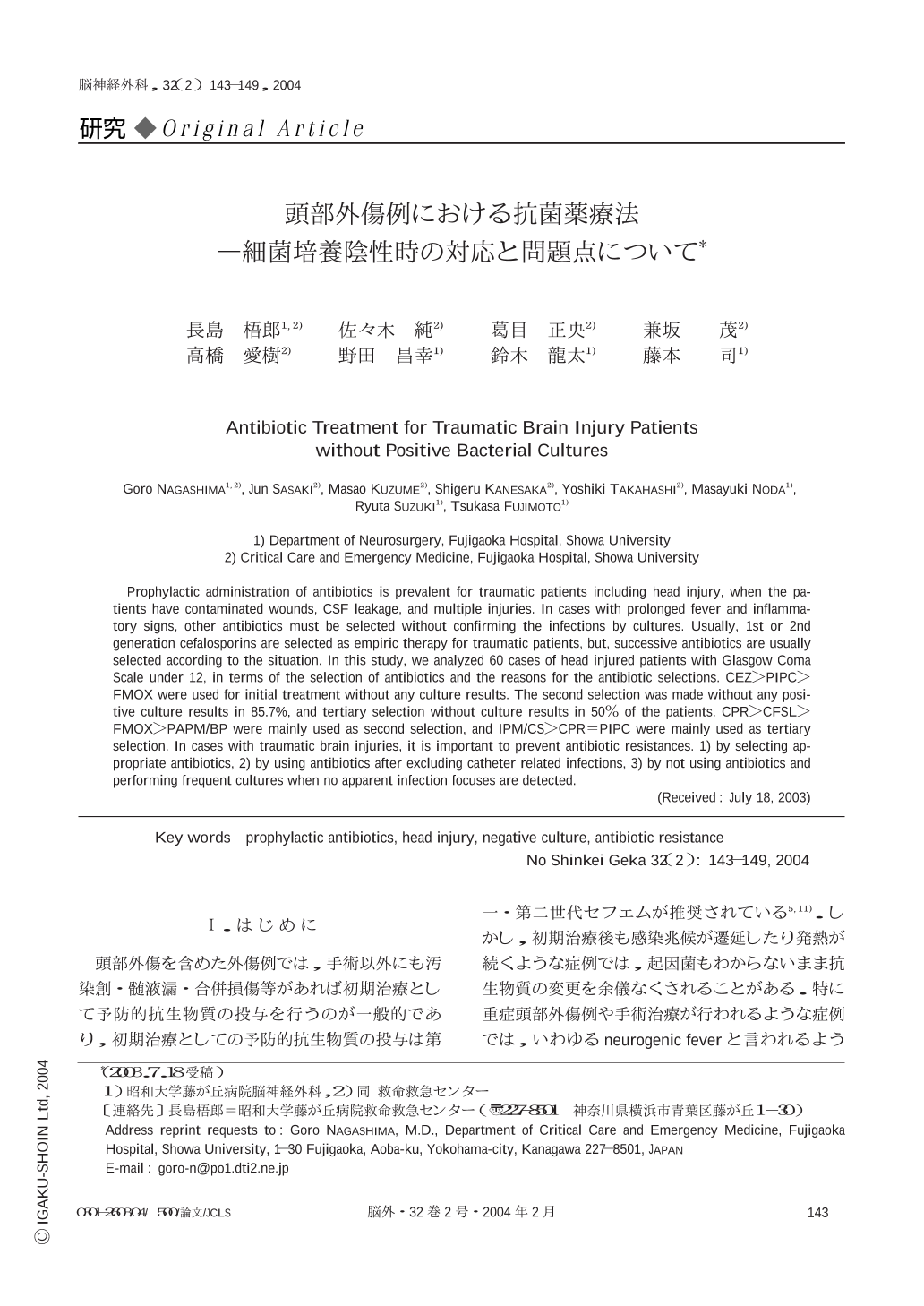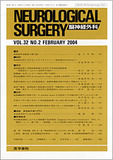Japanese
English
- 有料閲覧
- Abstract 文献概要
- 1ページ目 Look Inside
Ⅰ.はじめに
頭部外傷を含めた外傷例では,手術以外にも汚染創・髄液漏・合併損傷等があれば初期治療として予防的抗生物質の投与を行うのが一般的であり,初期治療としての予防的抗生物質の投与は第一・第二世代セフェムが推奨されている5,11).しかし,初期治療後も感染兆候が遷延したり発熱が続くような症例では,起因菌もわからないまま抗生物質の変更を余儀なくされることがある.特に重症頭部外傷例や手術治療が行われるような症例では,いわゆるneurogenic feverと言われるような細菌感染と鑑別が難しい発熱や炎症反応を示すことがあり,外傷後に強い炎症反応や発熱があっても感染症としての診断に疑問がもたれる場合もある12).Fig. 1Aにその典型例を示すが,Fig. 1Aは抗生物質の初期投与のみで感染症を予防できた症例である.Fig. 1Bはflomoxef sodium(FMOX)からcefpirome sulfate (CPR)に抗生物質を変更したにもかかわらず発熱・炎症反応が治まらず,結局起因菌は同定されず,CPR中止後しばらくして発熱および炎症反応が沈静化した,感染症ではないと考えられる症例である.Fig. 1CはFMOXを投与するも起因菌が検出できないため,発熱・炎症反応が続いていたが抗生物質を中止して監視培養を行ったところ,C-reactive protain(CRP)値が27.6 mg/dlまで上昇したためCPRを開始.炎症反応は徐々に改善したが,最終的に喀痰培養からmethicillin-resistant Staphylococcus aureus(MRSA)を検出,という経過を辿った症例である.この2つの症例は,いずれも2回目の抗生物質投与の選択に問題があった可能性を示唆する症例であり,重症頭部外傷例でよく遭遇するところである.
本論文では初期選択としての抗生物質の種類,抗生物質の使用理由,初期治療後の抗生物質の選択状況等とともに,感染症の診断に迷った場合の抗生物質の投与方法等について検討した.
Prophylactic administration of antibiotics is prevalent for traumatic patients including head injury,when the patients have contaminated wounds,CSF leakage,and multiple injuries. In cases with prolonged fever and inflammatory signs,other antibiotics must be selected without confirming the infections by cultures. Usually,1st or 2nd generation cefalosporins are selected as empiric therapy for traumatic patients,but,successive antibiotics are usually selected according to the situation. In this study,we analyzed 60 cases of head injured patients with Glasgow Coma Scale under 12,in terms of the selection of antibiotics and the reasons for the antibiotic selections. CEZ>PIPC>FMOX were used for initial treatment without any culture results. The second selection was made without any positive culture results in 85.7%,and tertiary selection without culture results in 50% of the patients. CPR>CFSL>FMOX>PAPM/BP were mainly used as second selection,and IPM/CS>CPR=PIPC were mainly used as tertiary selection. In cases with traumatic brain injuries,it is important to prevent antibiotic resistances. 1) by selecting appropriate antibiotics,2) by using antibiotics after excluding catheter related infections,3) by not using antibiotics and performing frequent cultures when no apparent infection focuses are detected.

Copyright © 2004, Igaku-Shoin Ltd. All rights reserved.


